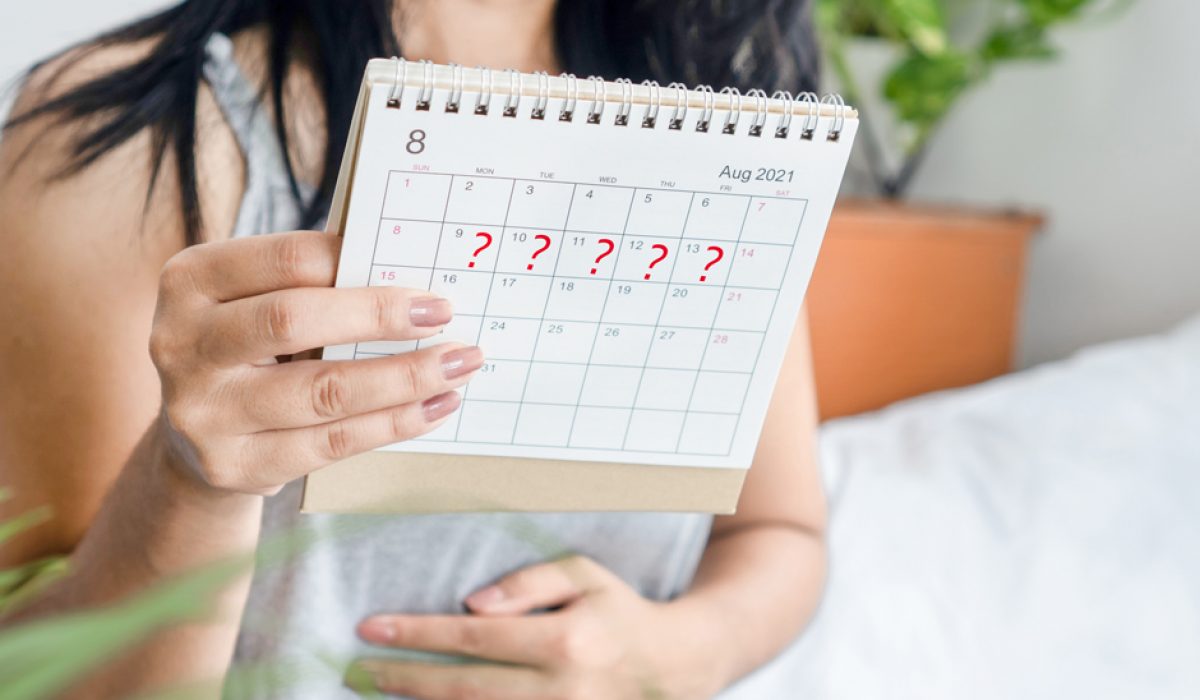Pelvic pain between periods can often be uncomfortable and confusing. While period cramps during menstruation are common and usually considered normal, pain that occurs at other times in the cycle may signal ovulation, hormonal changes, or underlying health conditions. Understanding the causes of pelvic pain, knowing when to seek help, and learning self-care strategies can help you manage any discomfort and take control of your reproductive health.
Is it normal to have pain between periods?
Many women experience period pain. It often starts as mild cramping in the lower abdomen, back or thighs in the days leading up to a period, and then continues during the early stages of menstruation. This type of period pain is often considered normal, provided it:
- Begins shortly before or at the start of the period
- Lasts from one to three days
- Is manageable with over-the-counter pain relief
- Doesn’t interfere with your daily activities
However, some women experience pain between periods. It often feels like a dull ache or sharp twinge in the lower abdomen. If the pain is frequent, severe, or unpredictable, then this could be a sign of an underlying condition. It’s important to check any pain that:
- Occurs at times unrelated to ovulation or menstruation
- Persists for several days or recurs regularly
- Does not improve with over-the-counter pain relief
- Interferes with work, sleep, or daily activities
Mr Alex Steshenko, Consultant Gynaecologist at The Gynae Centre, explains: “Pain outside of your period isn’t something to ignore. If it continues, worsens, or disrupts your daily life, it’s important to see a doctor. Pelvic pain can sometimes be a sign of underlying medical conditions such as PCOS, endometriosis, fibroids, or infections, all of which can be treated. Getting checked early can make a big difference in easing symptoms and protecting your long-term health.”
Possible causes of pain between periods
Pain between periods can have many potential causes. Some women experience mild, occasional discomfort linked to ovulation or hormonal fluctuations, while others may have more severe, persistent pain caused by infections, structural issues like fibroids or polyps, or conditions such as PCOS and endometriosis.
Ovulation pain (Mittelschmerz)
Ovulation typically happens two weeks after the first day of menstruation. During this time, hormonal changes stimulate the ovaries to prepare and release an egg. Eggs develop inside small sacs called follicles. As ovulation approaches, one to two follicles swell, but usually only one releases an egg. This release can sometimes cause mild ovulation pain and discomfort.
Hormonal birth control
Hormonal birth control pills can cause slight fluctuations in hormone levels throughout the month. These subtle shifts may trigger mild activity in the uterus or ovaries, sometimes leading to cramping, bloating, or brief pelvic twinges. Some people may also notice mild but distinct pelvic discomfort between withdrawal bleeds.
Infections
Infections in the reproductive organs – such as sexually transmitted infections (STIs) and Pelvic Inflammatory Disease (PID) – can cause inflammation and irritation between periods. This inflammation may affect the uterus, fallopian tubes, or ovaries, leading to pelvic pain, cramping, or tenderness at any time in the cycle.
Fibroids or polyps
Fibroids and polyps are noncancerous growths in the uterus that can cause pain between periods. They may press on surrounding tissues, disrupt normal uterine contractions, or cause irregular bleeding. This pressure and irritation can lead to cramping or pelvic discomfort at any time in the menstrual cycle, not just during menstruation.
Endometriosis
Endometriosis occurs when tissue similar to the uterine lining grows outside the uterus, often on the ovaries, fallopian tubes, or pelvic lining. These patches respond to hormonal changes throughout the cycle, not just during menstruation, causing inflammation, irritation, and scarring. This can result in chronic pelvic pain between periods and during ovulation.
Polycystic ovary syndrome
Polycystic Ovary Syndrome (PCOS) causes hormonal imbalances. These imbalances can trigger mid-cycle discomfort. PCOS also disrupts normal ovulation, often leading to enlarged ovaries with multiple fluid-filled follicles. These can stretch the ovarian surface or occasionally rupture, causing considerable pelvic pain.
How to manage pain between periods
Managing pain between periods at home often involves a combination of self-care strategies. Trying simple measures like over-the-counter medication, heat therapy, gentle exercise, proper hydration, and stress management can help reduce discomfort and make daily life more comfortable. Here are a few different approaches you can try.
- Pain Relief Medication: Taking over-the-counter pain relievers, such as ibuprofen or paracetamol, can help temporarily ease pelvic pain. Be sure to follow the dosing instructions correctly and consult a healthcare provider for more long-term relief.
- Heat Therapy: Using a hot water bottle, heating pad, or taking a warm bath can help relax your muscles and reduce pelvic cramps. Apply heat for at least fifteen to twenty minutes to relieve pain and ease discomfort.
- Exercise and Stretching: Gentle activities like yoga, walking, or stretching can improve blood flow, release tension, and decrease cramping. They can also help regulate hormonal fluctuations that contribute to mid-cycle discomfort.
- Hydration and Nutrition: Staying well-hydrated and eating balanced meals can often help reduce discomfort. In particular, foods with anti-inflammatory properties can help alleviate cramping and support overall health.
- Stress Management: Stress can sometimes worsen pelvic pain. Practicing relaxation techniques like deep breathing, gentle meditation, or mindfulness exercises can help you manage your symptoms.
When to see a gynaecologist
Are you experiencing pain between periods? It’s important to check pelvic pain that is severe, worsening, or lasting more than a day or two. It’s also important to seek help from a medical professional if your pelvic pain interferes with your daily life, or is accompanied by other symptoms, such as abnormal vaginal bleeding. If you’re nervous about getting help, keep in mind that gynaecologists are used to talking about pelvic pain and want to help you feel better. The gynaecologists here at The Gynae Centre will always do their best to offer immediate availability of pelvic scans, provide reassurance, identify any underlying conditions, and provide effective treatment options.
Mild, occasional pain between periods is often manageable at home, but persistent, severe, or unusual pain should never be ignored. Early assessment can provide reassurance, effective treatment, and lasting relief. Here at The Gynae Centre, we specialise in identifying and treating gynaecological conditions. Our friendly, discreet and non-judgemental team can ensure that your concerns are heard and that your pain is treated. To make an appointment to discuss your options further, call us on 020 7580 8090 or book online.






